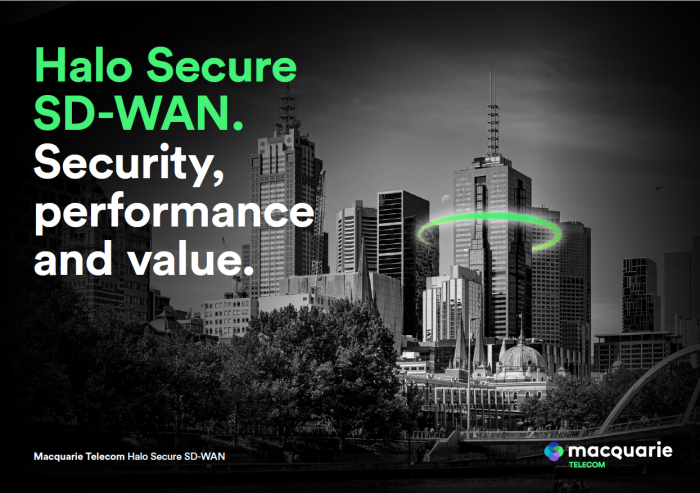Introducing Halo Secure SD-WAN: Secure and seamless.
Safety, performance and simplicity.
Halo Secure SD-WAN brings a high-performance network with responsive security tools into a simple package that provides value you won’t find anywhere else.
It starts with professionally installed business-grade fibre internet, and adds a cloud-based SD-WAN network that gives you 99.99% uptime.
AI-powered security comes standard, to defend your business against today’s constantly-changing cyber attack landscape.
And from design and rollout to ongoing 24/7 support, everything’s managed by our team of experts right here in Australia.
Building your Halo Secure SD-WAN
Customer Case Study: Seamless. Powerful. United.
“Partnering with Macquarie Telecom and their SD-WAN solution means we can spend our valuable donations on building stronger communities.
“Ever since we’ve had the new system installed, we’ve had zero issues with speed and connectivity, and zero impact on our business. Everything that we need to do, we can get done efficiently.”
– Clayton Noble, CEO, United Way
We’ve earned the trust of many leading brands.
We'd like to earn yours.
Find out more about Halo Secure SD-WAN
Frequently Asked Questions.
An SD-WAN network is a Software-Defined Wide Area Network. It is cloud based, and uses software to control and enhance the performance of WAN connections. As a virtualised network architecture, it can be deployed and updated remotely.
Software patching for business networks is the process of keeping the software of devices such as routers, switches and firewalls up to date, so they can address the latest security vulnerabilities, optimise performance, and add new features.
Data Loss Protection is an automated system which looks for unusual behaviours that result in data being shared outside a company’s networks. It does this by building a profile of typical data sharing patterns, and then alerting IT teams when atypical data sharing behaviour occurs.
A zero-trust approach to network security that assumes a breach has already occurred, and therefore requires every person or device trying to access the network to provide strict verification, even if they’re already working inside the organisations’ network.






















